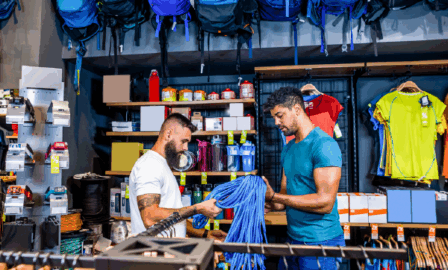What Businesses Need to Know for a Successful DTC Strategy
In recent years, we’ve seen companies increasingly look to the direct-to-consumer (DTC) space. While the DTC trend certainly isn’t new, the need for companies to establish an online presence to better engage with and respond to ever-changing consumer needs and expectations has certainly catalyzed efforts to invest and expand in the DTC space. During the pandemic, in particular, the consumer retail experience fundamentally shifted – and it seems to be sticking, as more and more retailers are establishing or expanding their direct-to-consumer strategy. Clarkston’s Steve Rosenstock, partner and CP industry lead, and Evan Shirley, Client Solutions Partner, recently presented at FoodLogiQ’s Virtual reCONNECT 2022 Conference on the growing DTC space and what companies need to know to be successful in their direct-to-consumer strategy.
Accelerated Growth in Direct-to-Consumer
In the past two or three years, the way that consumers purchase products has changed significantly, particularly as they’ve navigated the ongoing effects of the COVID-19 pandemic. There’s been a growth in eCommerce, and we’ve seen businesses quickly and reactively accelerate their path to establishing a DTC platform in order to retain a competitive edge. Having an online platform is table stakes these days, particularly as it relates to the ability to capture and utilize consumer data in a meaningful way.
Additionally, consumer expectations have increased drastically. From same-day delivery to a seamless return experience, to product transparency and sustainability, it’s been increasingly challenging for companies to meet the high expectations and demands of consumers into today’s world. The ever-evolving needs of the consumer combined with continued supply chain challenges and newly formed and digitally native companies entering an already competitive market presents economic, infrastructural, and logistical challenges for companies, small and large.
Establishing a DTC Distribution Network
When it comes to establishing a DTC distribution network, there are infinite possibilities to consider, but it truly depends on your business strategy, current infrastructure investments, or other constraints for your company.
- Full-channel outsourcing: This is where you effectively treat a partner like a wholesaler, where they take full inventory control and are responsible for fulfilling just like a typical 3PL (third-party logistics) provider. You can integrate front-end technology with your business to make it look like a consumer is just interacting with the company when in reality it’s the company and the partner together.
- 3PL partners: Typically the most common for traditional companies that want to launch a DTC business, 3PL partners exist within a current business today and are a viable consideration for establishing your DTC distribution network. In-network 3PL partners understand your product and know your product flow and are able to leverage that knowledge to launch a whole service around DTC. The downside of this approach for many traditional companies is that in-network 3PL provides can be really efficient at selling large pallets and orders, but it’s much more challenging for them with smaller orders, as would be the case for DTC. This approach takes considerable focus and emphasizes the value of the partnership for success.
- New 3PL: This approach could be considered a “middle ground,” as many new 3PL fully specialize in DTC and are able to incorporate best practices into your DTC business. The downside of this approach is, like with any business partner, they’re “net new,” so it’ll take some time to get them up to speed on your product and your business.
- Separate space for DTC: If you own a physical footprint, we’re seeing companies set up a separate space in their DC space in regard to higher volume small orders and lower volume large orders, which helps you gain efficiencies by having it in your own space. The downside is you need to start with just one or two DC facilities at the most because of technology challenges and the process and change management associated with it. Economic optimization is tough with just one facility, but over time, you can achieve greater optimization as you scale up.
A fundamental issue that many companies struggle with when considering the move to a DTC model is the massive shift in how they do business. Moving from shipping in pallets to warehouses to shipping in units to individual consumers is a significant change, and it could potentially be a loss leader for your business. Companies that are successful in their direct-to-consumer strategy, though, realize that it’s in investment in their business and in their ability to best connect directly with consumers.
Looking Ahead: DTC Strategy and the “New Normal”
We’re going to see companies continue to invest in and advance in the DTC space, especially since we know that consumer expectations are not going away. There’s a “new normal” in how people shop and consume products and the ways in which they expect more social transparency and responsibility from their brands. Companies who can adapt and respond accordingly to consumer expectations and needs – particularly as they use the first-hand data that accompanies the DTC model – will continue to be successful in their direct-to-consumer strategy.




